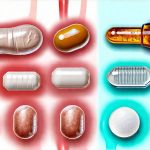Bladder irritation is a surprisingly common issue for women, often leading to frustrating symptoms like frequent urination, urgency (a sudden, compelling need to go), painful burning sensations, and even incontinence. It’s not always a sign of a serious underlying condition, but chronic bladder irritation significantly impacts quality of life. Many everyday substances can act as irritants, triggering or worsening these problems without a woman necessarily realizing the connection. Understanding what these irritants are and how to minimize exposure is the first step towards regaining control and comfort. This article aims to provide a comprehensive guide to identifying common bladder irritants and practical strategies for avoiding them, empowering women to take proactive steps toward better bladder health.
It’s crucial to remember that everyone reacts differently. What triggers symptoms in one woman might not affect another. Individual sensitivity levels vary greatly, making it essential to pay attention to your body’s signals. Keeping a symptom diary can be immensely helpful—tracking what you eat and drink alongside any changes in your bladder behavior allows you to pinpoint potential culprits more easily. Also, while lifestyle adjustments are often effective for managing mild irritation, persistent or severe symptoms should always prompt a visit to a healthcare professional to rule out other underlying medical conditions like urinary tract infections or interstitial cystitis (IC). You might also want to learn bladder safety before the holidays.
Identifying Common Bladder Irritants
The range of substances that can irritate the bladder is surprisingly broad. It extends far beyond obvious culprits like caffeine and alcohol, encompassing many everyday foods, beverages, hygiene products, and even certain fabrics. A key factor contributing to irritation is acidity – highly acidic substances frequently exacerbate bladder symptoms. This isn’t always intuitive; for example, seemingly healthy citrus fruits can be problematic for some individuals. However, it’s not just about acidity. Certain artificial sweeteners, preservatives, spices, and chemical compounds found in everyday products are also known irritants.
Beyond dietary factors, consider external sources of irritation. Tight clothing can put pressure on the bladder, increasing urgency. Harsh soaps or bubble baths can irritate the sensitive skin around the urethra, leading to discomfort. Even prolonged sitting can sometimes contribute to symptoms. Identifying your specific triggers requires a bit of detective work and mindful observation. Becoming aware of potential irritants is half the battle. If you are active, remember gym hygiene to avoid bladder trouble.
One often overlooked area is hygiene products. Many feminine hygiene washes contain harsh chemicals or fragrances that can disrupt the natural pH balance of the vaginal and urinary tracts, increasing irritation. Similarly, scented toilet paper, laundry detergents, and fabric softeners can all contribute to bladder sensitivity. When in doubt, opting for fragrance-free, hypoallergenic alternatives is always a safer choice.
Dietary Adjustments for Bladder Health
Making informed dietary choices is arguably the most significant step you can take toward reducing bladder irritation. Here’s how to approach it:
- Reduce or Eliminate Caffeine: This includes coffee, tea (even herbal teas containing caffeine), soda, and energy drinks. Caffeine is a known diuretic, meaning it increases urine production and can put extra stress on the bladder. It also directly stimulates the bladder muscles, potentially leading to urgency.
- Moderate Alcohol Consumption: Like caffeine, alcohol is a diuretic and can irritate the bladder lining. If you choose to drink alcohol, do so in moderation and opt for less irritating beverages like water or sparkling water between alcoholic drinks.
- Limit Acidic Foods & Beverages: This includes citrus fruits (oranges, lemons, grapefruit), tomatoes and tomato-based products, vinegar, spicy foods, chocolate, carbonated beverages, and cranberry juice (despite being a common recommendation for UTIs, it’s acidic and can irritate the bladder).
- Be Mindful of Artificial Sweeteners: Many artificial sweeteners, such as aspartame and saccharin, have been linked to bladder irritation in some individuals. Consider natural alternatives like stevia or reducing overall sweetener intake.
A gradual approach is often best when making dietary changes. Abruptly eliminating entire food groups can be challenging to sustain. Instead, start by identifying the most likely culprits based on your symptom diary and gradually reduce their consumption. Pay attention to how your body responds and adjust accordingly. Remember that hydration is also key – drinking enough water helps dilute urine and reduces irritation, but avoid excessive fluid intake close to bedtime to minimize nighttime trips to the bathroom. Planning ahead for long flights can help too!
The Role of Lifestyle Factors
Beyond diet, certain lifestyle habits can significantly impact bladder health. Proper pelvic floor muscle exercises (Kegels) are essential for strengthening the muscles that support the bladder and urethra, helping to prevent leakage and improve bladder control. However, overdoing Kegel exercises can sometimes cause tension and contribute to urgency; it’s important to perform them correctly and avoid excessive strain.
Stress management techniques like yoga, meditation, or deep breathing exercises are also beneficial. Stress can exacerbate bladder symptoms by increasing muscle tension and sensitivity. Regular exercise (aside from pelvic floor exercises) promotes overall health and wellbeing, which indirectly supports bladder function. If you’re looking for some peace of mind, consider a safe zone.
Finally, pay attention to your bowel habits. Constipation can put pressure on the bladder and worsen symptoms. Maintaining a diet rich in fiber, drinking plenty of water, and engaging in regular physical activity can help prevent constipation and promote healthy bowel movements.
Navigating Personal Care & Hygiene
As mentioned earlier, personal care products often contain irritating ingredients. Here are some specific steps you can take:
- Choose fragrance-free, hypoallergenic products: This applies to everything from soap and shampoo to laundry detergent and toilet paper.
- Avoid feminine hygiene washes and douches: These disrupt the natural pH balance of the vagina and urethra, increasing irritation. Gentle water is usually sufficient for cleaning.
- Wear breathable cotton underwear: Avoid synthetic fabrics that can trap moisture and irritate the skin.
- Limit bubble baths and harsh bath products: Opt for plain warm water or mild, unscented bath oils.
- Consider switching laundry detergents: If you suspect your current detergent is irritating, try a hypoallergenic alternative specifically designed for sensitive skin.
It’s important to note that simply labeling something as “natural” doesn’t automatically make it bladder-friendly. Always check the ingredient list and be mindful of potential irritants. A patch test can also be helpful – applying a small amount of product to your skin to see if it causes any reaction before using it more widely. You may find showers help too!
It’s vital to remember that managing bladder irritation is often an ongoing process of experimentation and adjustment. There’s no one-size-fits-all solution. By carefully identifying your individual triggers, making informed lifestyle choices, and seeking guidance from a healthcare professional when necessary, you can significantly improve your bladder health and regain control over your wellbeing. Learning what to wear for comfort is also key! And don’t forget about avoiding irritation at work.





















